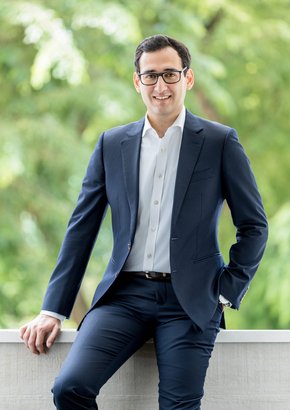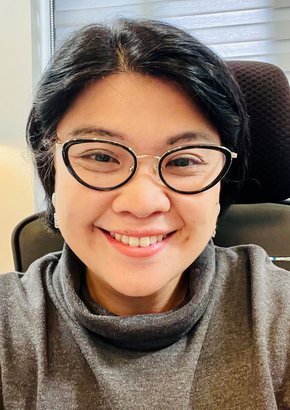
Rebecca Chenery
Chief Digital Officer
In 2010, Watercare consolidated seven water utility companies in Auckland to create a more consistent, better managed system for the city’s residents. Watercare quickly built a solid track record in infrastructure and service delivery, but Raveen Jaduram, Watercare’s Chief Executive Officer, has over the last several years focused on putting customers at the heart of the business. According to Chief Digital Officer Rebecca Chenery, “becoming customer-centric today means more than being reliable and efficient – it means being fast, flexible and responsive to the changing needs of Aucklanders”. This sentiment is the driving force behind the digital transformation and application of technology underway at Watercare.
The multi-year transformation has been led by Raveen Jaduram and his Executive team, knowing that, for real change in mindsets and culture to occur, it needed to be led and modelled from the top. The company’s Strategic Transformation Programme, of which Paul de Quaasteniet is the Programme Director and Peter Johnston is Enterprise Change Lead, represents an overhaul of ways of working, technologies and how data is leveraged across the business. To meet the targets set out in the programme, a collaborative attitude has been essential, together with the combination of multiple teams from across the business. For example, Watercare did not want to create an ‘innovation bubble,’ but a cooperative, communal environment where opinions are valued and voices are heard. “For an organisation like Watercare, which has had a number of long-tenure staff and legacy ways of working, the culture shift has been substantial,” affirms Chenery.
A key way in which the company’s management team drove this change in working culture was through the creation of a new co-working space, The Hub, which Chenery says “provides a place for people to meet, eat, work and host visitors - to use as they see fit.” The notion of a shared, multi-purpose space was new for Watercare. It was an initial signal that the culture was changing into more of a creative environment, led by new ideas and collaborative working. Additionally, Watercare placed key leaders through a tailored leadership programme, and provided staff with Agile Fundamentals and Design Thinking training and on-the-job learning. This has ensured that employees are poised for greater success moving forward by creating an agile mindset that encourages thinking openly, solving problems differently, and greater collaboration.
“We have seen a big shift in how teams have removed functional barriers, found a common goal and pooled efforts in the same direction – these new attitudes and skills in working inside and across teams has been fundamental,” says Johnston.
“The Strategic Transformation Programme gave the foundation for three aspirational outcomes,” says de Quaasteniet. “These are: that the customer can do everything for themselves wherever they are, in a single interaction; that our people have the right tools, best processes and are empowered to do their jobs; and that they are able to make insight-informed and fact-based decisions with confidence.” Through streamlining processes and improving staff skills and attitudes in working with data, Watercare is now able to use its insights to make informed decisions that are more predictive than reactive and ultimately improve customer experience.
In terms of technology, the transformation has involved the successful replacement of the customer, billing, and financial systems; an automated marketing solution for internal and external communications teams; a new enterprise asset management system for the operations side of the business; and a planning and insights solution for analysing population and growth data to see where Auckland’s major growth is occurring while assessing how to best respond. With the help of specialist partners, robotic process automation (RPA) technology has been implemented across key business processes, helping Watercare’s people to use and see benefits from integrated technology.
“Our squads have also been working with our business support areas, such as Health, Safety and Wellbeing and Human Resources. We have automated the transactional parts of these functions to free our professionals up to do what they are here to do: support our leaders and our people to be at their best,” says de Quaasteniet.
These new technologies have been pushed out through the new approaches towards culture, delivery and change management introduced by the Strategic Transformation Programme. For example, the development of its platform strategy, hosted by AWS, will future-proof Watercare’s core technology needs and allow the organisation to respond to and introduce new solutions to long standing problems.
One essential innovation is Watercare’s Data Hub. Established on the new, AWS-hosted platform, the Data Hub brings together data that was previously scattered across the business into one accessible visualisation layer, making it available and digestible for every employee. It also facilitates the exchange of information with external organisations and agencies, such as Auckland Council.
Data Hub supports Watercare’s principles of “data availability, quality, stewardship and governance,” which de Quaasteniet says has resulted in “a shift in how people use data, come together across the Data Hub and drive insights.”
“As an example, we are rolling out IoT across key parts of our network, and streaming data through our Data Hub. This enables our data science team to uncover insights that will allow the operational teams to save money, save water, and increase customer satisfaction,” he adds. "Having the right partners on the journey was critical. The fresh talent from Harmonics has accelerated our shift towards a data-driven culture. TTC has helped move our test automation from zero to over 80%, seriously raising our Quality game”
Attracting and nurturing top talent has been central to implementing a large and complex programme of work. “Having clear career steps and implementing badge systems to provide an evidence-based route to professional progression is important. We have needed to give our talented technical people pathways to build their skills that don’t necessarily end up in ‘people management’. We are competing hard in the market for these new skill sets - Data Science, Behavioural Science – and we need to give these people lots of room for growth and development,” says de Quaasteniet.
The change has been significant. Now, instead of new tech projects taking one to three years to complete, with the new platform and ways of working, Watercare can deliver change in substantially less time - weeks and months rather than years. Another component is the organisation’s automated testing platform, which minimises the spend on testing from 30% of the budget to under 10% while quadrupling the efficiency and speed of testing. Partnering with the right experts who can help augment its capability has been a critical aspect of the success of Watercare’s technology quality drive.
The next step for the Data Hub is the development of the Nerve Centre – Watercare’s ‘air traffic control tower’ which is both physical and technical. Visualisation will be key to its operation, with large screens and interactivity bringing together different aspects of the organisation through the application of data. Ultimately, the Nerve Centre will provide a predictive layer to the maintenance of Auckland’s water supply so Watercare can preempt problems or identify them early, allowing for timely maintenance.
Looking ahead, Watercare will continue to focus on digital innovation. “Keeping ahead of technological advances, scanning the market inside and outside of the water industry, and trying to raise digital literacy across staff are core expectations of the Digital team,” explains Chenery.
The digital transformation that Watercare has experienced has enabled it to remain at the forefront of new technologies which provide the foundations for innovation. Through the implementation of innovative technology, the organisation is able to deliver an improved, more sustainable digital experience than before, and implement change more quickly and effectively. “Everything we have done, whatever outcome we needed to deliver, has been focused on our people and our customers,” says Chenery. “The culture change is the foundation of everything that we have been able to do.”
Read Watercare's story in the brochure.

Featured Interviews
“It’s about turning it beyond building that market awareness; beyond that education to actually go after tangible, measurable, replicable claims”





